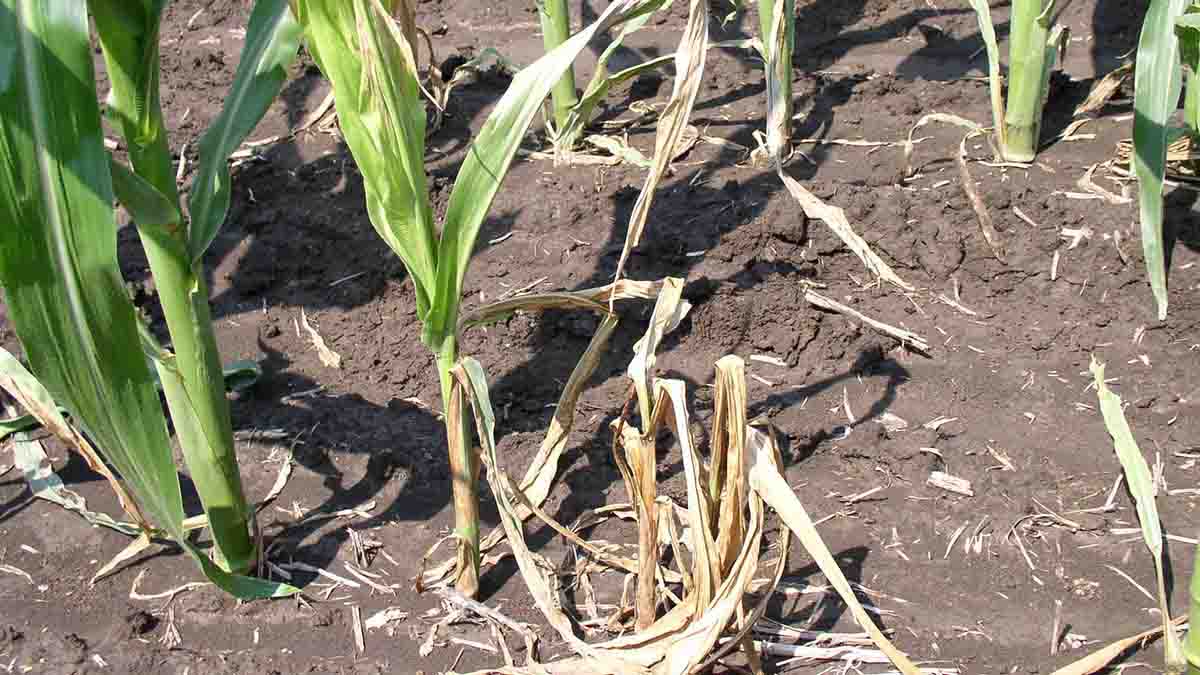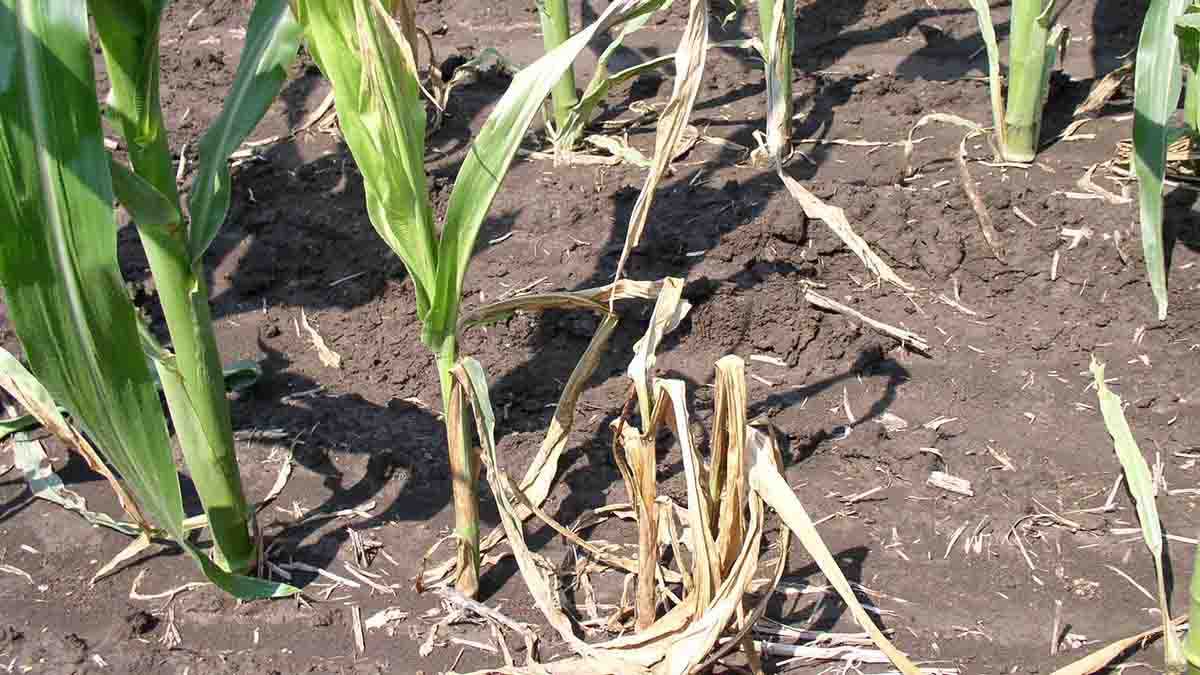Stewart's Wilt
Pest Common Name
- Disease name — Stewart’s wilt of corn
- Disease pathogen — Pantoea stewartii (formerly known as Erwinia stewartii)
- The primary host plant is corn (Zea mays), additionally, some grasses, including Tripsacum dactyloides, Setaria lutescens and teosinte (Zea mays ssp. mexicana) can be infected
Stewart’s wilt of corn is primarily found in North America, particularly in the mid-Atlantic and Ohio River Valley regions, as well as the southern portion of the Corn Belt. This includes parts of Connecticut, Delaware, Illinois, Indiana, Iowa, Kentucky, Maryland, Missouri, New Jersey, New York, Ohio, Pennsylvania, Rhode Island, Virginia and West Virginia. The disease is not present in Idaho. It has also been reported in other countries, including Brazil, Canada, China, Costa Rica, Malaysia, Mexico, Puerto Rico, Italy, Guyana, Peru, Poland, the former Soviet Union, Romania, Thailand and Vietnam.
Biology
P. stewartti primarily spread by the corn flea beetle (Chaetocnema pulicaria), which acquires the pathogen while feeding on infected plants and transmits it to healthy plants through feeding wounds. Once inside the plant, the bacterium colonizes the xylem vessels, leading to systemic infection. P. stewartii can overwinter in the gut of the corn flea beetle, allowing it to persist from one growing season to the next.
Symptoms
Symptoms of Stewart’s wilt on corn plants appear in two phases: In the seedling phase, seedlings show light green to yellow linear streaks with wavy margins parallel to the veins, leading to necrosis, wilting and death, with internal vascular discoloration and crown decay. In the leaf blight phase, after tasseling, leaves develop pale green to yellow streaks that dry out and turn brown and tassels may appear bleached or prematurely dead.
Damage
Stewart’s wilt can significantly impact corn production by reducing yield and quality. The disease decreases the size of the corn stand and limits production, resulting in fewer and smaller ears of corn

Management
Managing Stewart’s wilt involves planting resistant corn hybrids to reduce disease impact, controlling the corn flea beetle with early-season systemic insecticides like carbaryl, implementing crop rotation and avoiding fields with a history of the disease, and monitoring flea beetle populations using weather-based forecasting models to predict and manage outbreaks.
References
- Munkvold, G. P., & White, D. G. (Eds.). (2016). Compendium of Corn Diseases (4th ed.). The American Phytopathological Society.
- Pataky, J. K. (2003). Stewart’s Wilt of Corn. APSnet Feature Articles. https://doi.org/10.1094/apsnetfeature-2003-0703.
Pesticide Warning
Always read and follow the instructions printed on the pesticide label. The pesticide recommendations in this University of Idaho webpage do not substitute for instructions on the label. Pesticide laws and labels change frequently and may have changed since this publication was written. Some pesticides may have been withdrawn or had certain uses prohibited. Use pesticides with care. Do not use a pesticide unless the specific plant, animal or other application site is specifically listed on the label. Store pesticides in their original containers and keep them out of the reach of children, pets and livestock.
Trade Names — To simplify information, trade names have been used. No endorsement of named products is intended nor is criticism implied of similar products not mentioned.
Groundwater — To protect groundwater, when there is a choice of pesticides, the applicator should use the product least likely to leach.
- Gary Munkhold, Iowa State University, Bugwood.org
Christian Cumagun, Plant Pathologist
James Woodhall, Plant Pathologist, Associate Professor and Extension Specialist
2025







